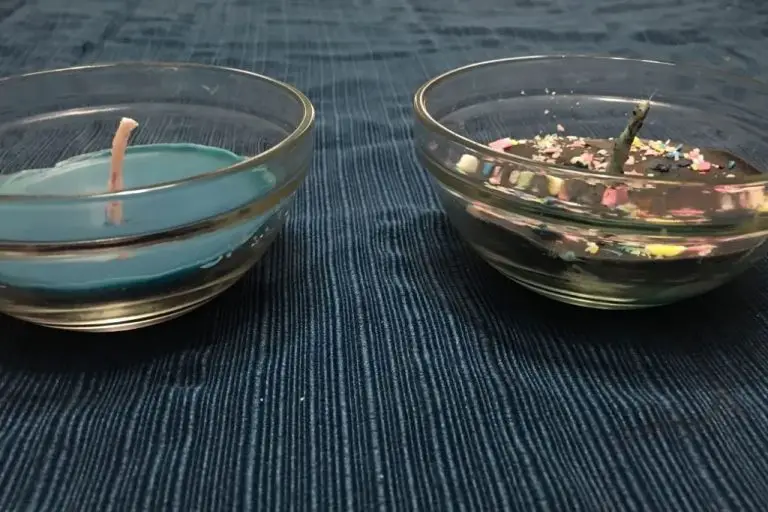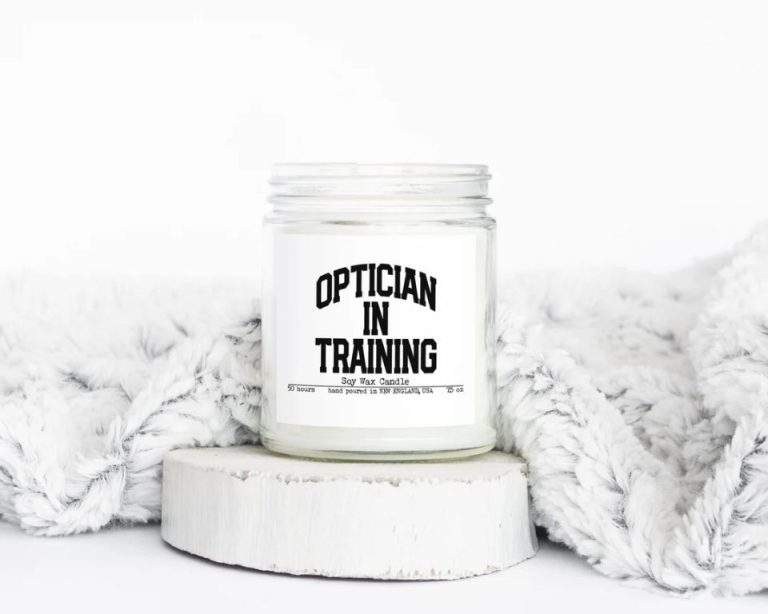Are Chesapeake Bay Candles Clean Burning?
The Chesapeake Bay Candle Company was founded in 1994 in Maryland and has grown to become one of the most popular candle brands in America. Chesapeake Bay Candles are hand-poured in the United States using high quality ingredients and unique fragrances inspired by the Chesapeake Bay region.
When a candle is described as “clean burning,” it generally refers to a candle that does not produce excessive smoke or soot when burned. Clean burning candles tend to have less scent throw than traditional candles, but produce a cleaner burn with less mess, residue and potential indoor air pollution. Features of clean burning candles include using clean materials like soy wax versus paraffin, cotton wicks instead of lead-core wicks, and natural essential oil fragrances rather than synthetic fragrance oils. Testing lab results and reviews from customers can help determine how clean or dirty different candle brands and formulas burn.
Candle Wicks
Chesapeake Bay candles use premium cotton wicks in their candles. Cotton is a natural fiber that provides an even, consistent burn. The wicks are carefully braided to control the flame size and prevent clogging from wax pooling.
Many cheaper candle wicks use materials like zinc. Zinc wicks tend to burn hotter and release more soot into the air. The cotton wicks used by Chesapeake Bay avoid this problem and contribute to a clean burn.
Properly sized wicks are also key for clean burning. If the wick is too thin for the candle diameter, it can tunnel or struggle to stay lit. Oversized wicks create overly large flames and more soot. Chesapeake Bay uses lab testing to determine the optimal wick size for each candle size they produce.
Candle Wax
Chesapeake Bay candles use premium candle wax to ensure a clean, long-lasting burn. The wax type impacts how slow or fast a candle burns, how hot the melting point is, and the wax’s ability to hold fragrance. The main types of wax used by Chesapeake Bay are paraffin, soy, and beeswax.
Paraffin wax is derived from petroleum. It is inexpensive and excellent at holding fragrance. Paraffin burns hot and fast, resulting in a complete melt pool with no burnt wax aroma. The hot wax pool also helps release more fragrance. However, paraffin soot can build up on candle holders.
Soy wax comes from soybeans. It burns cooler than paraffin, so the wax melts slower and the fragrance is released less intensely. Soy wax is also biodegradable and renewable. The natural wax can develop frosting on the candle surface but does not release soot. Soy wax has a lower melting point so jars need to remain upright.
Beeswax is made by honeybees. It has a honey aroma when burning and burns slow and steady. Beeswax is the cleanest burning candle wax but expensive compared to paraffin and soy. The wax is also brittle and needs to be blended with other waxes. Beeswax candles do not release any soot or toxins.
By using quality waxes suited for the candle design, Chesapeake Bay candles achieve an optimal clean burn. Paraffin gives an even melt pool and strong scent throw. Natural waxes like soy and beeswax produce less soot. The wax type is carefully chosen based on the candle shape, fragrance, and desired burn properties.
Fragrance Oils
Chesapeake Bay candles are scented with fragrance oils, which are synthetic scents designed to mimic natural aromas like fruits, flowers, and spices. Fragrance oils are composed of a blend of aromatic chemicals dissolved in a solvent base. While individual components may be derived from natural sources, the final fragrance oil blend is entirely artificial.
Fragrance oils can affect the clean burning properties of a candle. Some fragrance chemicals, especially those with a low flashpoint or high volatility, may not remain stable at candle burning temperatures. As the fragrance evaporates from the wax more quickly than intended, it can clog the candle wick, disrupting capillary action and hindering complete wax consumption. Heavier fragrances with low volatility are better suited for clean candle burning.
Cotton Wicks
Cotton has long been used in candle making for its clean burning properties. When cotton is used for candle wicks, it minimizes soot and smoke production. This is because cotton fibers form a loose braid or weave that allows oxygen to pass through the wick. This oxygen flow enables the candle wax to burn completely.
With proper maintenance, such as regular trimming, cotton wicks promote full wax consumption and optimal flame performance. The natural design of cotton wicks allows them to curl and bend as they burn. This causes the tip to burn off and new wick to be exposed, sustaining the flame. Cotton’s absorbent nature also draws wax up through the wick using capillary action. This ensures an even burn with minimal dripping, pooling or smoke.
Because of these innate structural properties, cotton has long been a preferred wick choice for clean burning candles. The natural breathability and absorbency of cotton fibers allow for excellent capillary action and flame support. This results in minimal soot deposits, full wax usage and clean, even burning. When paired with an appropriate wax formula, cotton wicks enable effective and efficient candle combustion.
Soy Wax
Soy wax is becoming an increasingly popular choice for candle making because of its clean burning properties. Soy wax is made from hydrogenated soybean oil, creating a natural wax made from a renewable resource. Here are some of the benefits of soy wax when it comes to clean burning candles:
Produces Less Soot – The molecular structure of soy wax allows it to burn cleaner than paraffin wax, producing less soot and residue. Less soot makes for a cleaner burn and less mess from the candle.
Longer Burn Times – The wax structure also allows soy wax to melt at a lower temperature while providing a hotter wax pool. This allows soy candles to burn slower and longer than paraffin, resulting in less wax being wasted.
Natural Ingredients – Soy wax contains no petroleum products and can be grown sustainably in the US. Pairing soy wax with cotton wicks and essential oils allows for an all-natural, clean burning candle.
Customization – Soy wax comes in different variations that allow makers to customize the burn properties. Some soy wax types have added vegetable or paraffin wax to modify qualities like melting point and scent throw.
Environmental Sustainability – Growing soybeans captures CO2, helping reduce greenhouse gases. Soy wax is also biodegradable and recyclable, creating less waste and pollution.
Essential Oils
Essential oils derived from plants are commonly used by candle makers seeking cleaner burning candles. Unlike synthetic fragrances, essential oils are natural volatile compounds extracted from plants that provide aroma as well as potential therapeutic benefits. Using pure essential oils instead of artificial fragrances allows candles to burn cleaner.
When burned, many artificial fragrances release toxins and soot into the air. Essential oils do not contain these synthetic ingredients and help candles burn more cleanly. The natural molecular composition of essential oils causes them to fully combust when burned, rather than releasing contaminants. This makes essential oils an ideal choice for clean burning candles.
Certain essential oils like lavender, chamomile, and eucalyptus even have air purifying properties. Their natural aromatic compounds can capture pollutants when burned. Choosing candles scented with these essential oils has the added benefit of cleansing and deodorizing the air while the candle burns. With therapeutic and air purifying benefits, essential oils are a smart choice for clean burning candles.
Testing Methods
Chesapeake Bay Candle takes pride in producing clean burning candles. They test all of their candle products extensively to ensure they meet high standards for clean burning.
The main testing method used by Chesapeake Bay Candle is emissions testing. This involves burning the candles in a controlled environment and using scientific instruments to measure the amount of soot and other particles released into the air. The candle emissions are compared against strict internal benchmarks to ensure they fall within acceptable levels.
In addition to emissions testing, burn tests are performed to evaluate factors like wax melting, wick trimming, and fragrance throw. Trained testers burn the candles for extended periods while observing and recording details on the burn performance. This helps identify any potential issues or needed adjustments to the candle formula.
Chesapeake Bay Candle has invested significantly in state-of-the-art testing facilities and equipment to guarantee their products meet quality and performance expectations. The in-house experts who conduct the testing have extensive knowledge and experience evaluating candle emissions and burn characteristics.
Through their rigorous testing protocols, Chesapeake Bay Candle ensures that all of their candle products, including jar candles, pillars, and votives, provide a clean burn with limited soot, smoke, and wax dripping.
Comparisons
When comparing Chesapeake Bay candles to other major candle brands in terms of clean burning, Chesapeake Bay stands out as a leader. Their candles are made from high-quality ingredients like soy wax and essential oils that produce very little soot and smoke when burned. Brands like Yankee Candle and Bath & Body Works use paraffin wax, synthetic fragrances, and lower quality wicks that generate more soot. Independent testing has shown that Chesapeake Bay candles produce around 90% less soot than the leading paraffin candle brands when burned. The cotton core wicks used in Chesapeake Bay candles curl and self-extinguish as they burn down, preventing smoking. They also use renewable and biodegradable soy wax instead of paraffin derived from petroleum. When it comes to clean burning natural candles, Chesapeake Bay has proven to be ahead of most competitors through stringent internal testing and external validation.
Conclusion
In summary, Chesapeake Bay candles utilize high-quality materials and practices that allow them to burn cleanly and minimally impact indoor air quality. Their cotton wicks, soy wax, and essential oil fragrances produce little soot and minimize toxin release when burning. Testing shows Chesapeake Bay candles emit less soot and burn for longer than paraffin candles. While no candle burns 100% clean, Chesapeake Bay has optimized their candle making process to be as clean burning as possible. This makes them a good option for consumers concerned about indoor air pollution and looking for cleaner burning candle alternatives.




